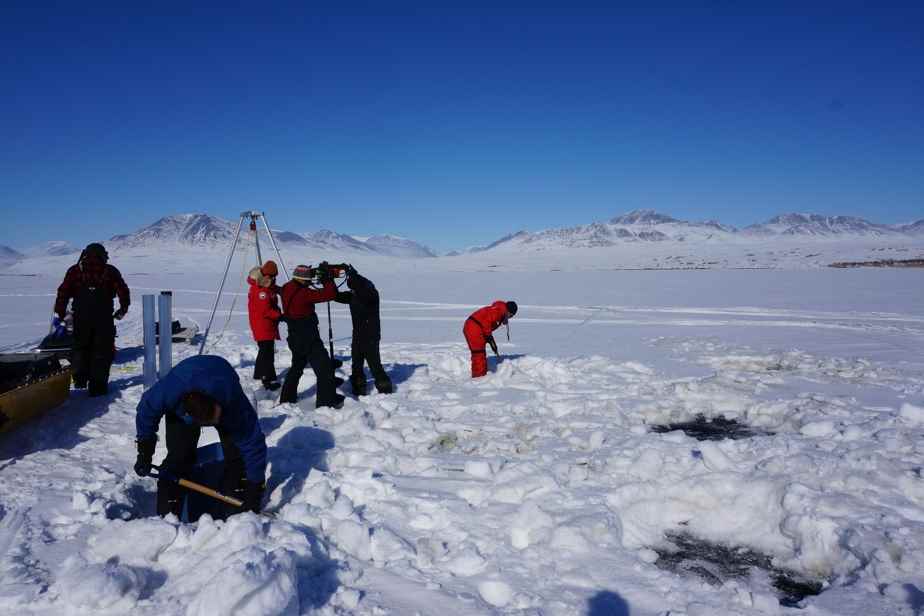(Tokyo) Global warming could cause a “viral spillover” from the Arctic, where viruses hitherto preserved in the ice could come into contact with new hosts in other environments, according to a study published on Wednesday.
Posted at 7:18 p.m.
Viruses need a host (human, animal, plant or moss) to replicate and spread, using a host lacking immunity if necessary, as the recent COVID-19 pandemic has shown with the Man.
Canadian scientists investigated whether climate change could favor such a scenario in the Arctic environment of Lake Hazen. Located in the far north of Canada, it is the largest lake located beyond the Arctic Circle.
The researchers took samples from the bed of a river that feeds it when the ice melts during the summer, as well as from the bottom of the lake. This required drilling two meters of ice before reaching the bottom of the icy waters of the lake, almost 300 meters away.
Using ropes, a snowmobile then hoisted up the sediments, which were sequenced for their DNA and RNA, the genetic code and the replication tool of life.
“This allowed us to determine which viruses were in a given environment, and which potential hosts were also there,” explained Stéphane Aris-Brosou, associate professor in the biology department at the University of Ottawa, who supervised the study.
The team then set out to find out how susceptible the viruses were to switching hosts, looking at the equivalent of their respective family trees.
Arrival of new guests
“We tried to measure how much these trees [généalogiques] were similar,” explained Audrée Lemieux, of the University of Montreal, first author of the study.
Similar genealogies suggest the virus evolved with its host, while differences indicate it may have switched hosts. And if he’s done it at least once, he’s likely to do it again.
The analyzes showed large differences in the family trees of the viruses and their hosts in the sediments extracted from the bottom of the lake.
These differences were less pronounced in the bed of the river feeding the lake. The researchers speculate that meltwater from glaciers erodes bed sediments, thereby limiting interactions between viruses and potential hosts.
On the other hand, the acceleration of the melting of the glaciers feeding the lake has also increased the quantity of sediments which are transported there.
“This will put hosts and viruses in contact that would not normally be,” said Audrée Lemieux.
The authors of the study, published in the Royal Society’s journal of biological research, Proceedings Bhave taken care to specify that they do not foresee any viral overflow or a pandemic.
“The probability of dramatic events remains very low,” according to Audrée Lemieux. But according to the researchers, the risk could increase with continued global warming, as new hosts could venture into previously inhospitable regions.
“It could be ticks or mosquitoes or other animals, but also bacteria and viruses,” according to Audrée Lemieux.
The possibility of an overflow is “completely unpredictable, and so are its consequences, ranging from a benign character to a true pandemic”, she added.
